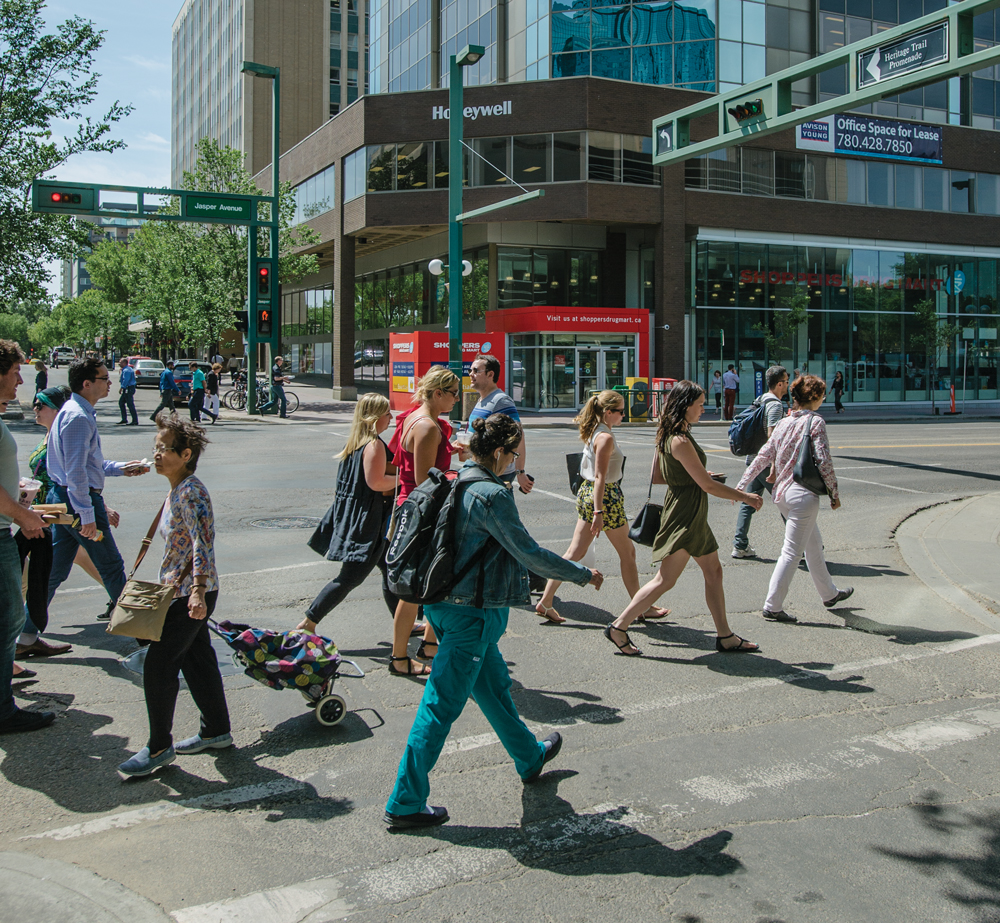When she isn’t traversing the city with clients, realtor Sara Kalke is often at Leva enjoying a cup of coffee – partially because the cafe is close to her home. In recent years, Kalke found she wasn’t the only one who prized walkability – client after client was requesting a home in a walkable neighbourhood. She didn’t have a resource to point them to so, after a while, she decided to fill the need herself. Along with photographer Ferdinand Maingat (who is also Kalke’s husband) and project manager Sarah Hoyles, Kalke created the website Walkable Edmonton.
The need for walkability and walkable design isn’t a new phenomenon – in 2009, city council passed an Active Transportation Policy that included a Sidewalk Strategy and Walkability Strategy. The Walkability Strategy defines walkability as “the extent to which the built environment is friendly to the presence of people walking, living, shopping, visiting, enjoying or spending time in an area” – and Kalke agrees. “It doesn’t necessarily mean that you are living in a particular set of neighbourhoods,” says Kalke. “The key elements are that there’s a destination to walk to, that walking is safe, not just in terms of safety from crime but safety from vehicles, from elements like heat and wind.”
Currently, Walkable Edmonton shines a spotlight on six neighbourhoods – Ritchie, Westmount, Oliver, Old Strathcona, Garneau and Downtown – and Kalke has 18 additional neighbourhoods on the horizon. The site gathers certain resources, such as which parks and coffee shops are within a neighbourhood, but also showcases a neighbourhood’s quirkier aspects – for example, a profile of shop dog, Pippa, at Mill Creek Framing, and Maven & Grace. “The thing that I find the most fascinating about being a part of a new place, as somebody who’s travelling there or moving there, is the stories of the people who are within that community,” says Kalke. Consequently, the team often hits the streets to chat with people living within the communities featured on the site, whose thoughts are shared in the website’s “Stories” section.
While Kalke and her team work hard to highlight features of each neighbourhood, she admits that strategies in urban planning and design have a lot to do with why the resource is thriving. “This isn’t us creating walkability, this comes from the work of planners and people on city council and designers who have been tying Edmonton into this idea that, what if we build a city where the core was attracting young start-ups? What if we build a city where it was friendly for people to come back downtown?” says Kalke. “I think it’s not as much that we’re moving there [towards less dependency on vehicles] – I think it’s what we are there. People are starting to turn towards this idea that [their] lifestyle can be more about the experience than the stuff.”
